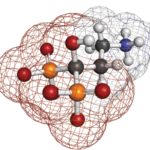Heart Failure & RA
By Yumeko Kawano, MD, & Katherine P. Liao, MD, MPH
Why was this study done? Heart failure (HF) is the leading cause of hospitalization among individuals older than 65, with a growing number of patients diagnosed with a subtype called HF with preserved ejection fraction (HFpEF). HF subtypes have direct clinical implications for the screening and treatment of patients; however, data on these subtypes in patients with rheumatoid arthritis (RA) are limited. This study compared the risk of HF and HF subtypes among patients with RA compared with those without RA.
What were the study methods? Patients with RA and non-RA comparators were identified among participants enrolled in a research biobank from two large academic centers with linked electronic health records (EHRs). We applied validated machine-learning and natural language processing methods to further identify individuals with HF subtypes based on ejection fraction data. We then compared the risks of new-onset HF and HF subtypes in patients with and without RA. When comparing risk between the two groups, the models adjusted for known risk factors for HF, such as age, hypertension and diabetes.
What were the key findings? Among 1445 RA patients and 4,335 matched non-RA comparators, HFpEF was the most common HF subtype in both groups (65% in RA vs. 59% in non-RA). Patients with RA had an estimated 1.8x increased risk for HF compared to non-RA (hazard ratio [HR] 1.79, 95% CI 1.38-2.32) even after adjusting for known risk factors. When examined by HF subtypes, the risk for HFpEF was approximately 2x higher in RA compared to non-RA, (HR 1.99, 95% CI 1.43-2.77), while no statistical difference was observed in HFrEF risk.
What are the implications for patients and clinicians? In this study, we observed that RA was an independent risk factor for HF, particularly for HFPEF, representing 65% of all HF cases among patients with RA. Together with prior studies of RA demonstrating an association between inflammation and increased risk for HFpEF, these data suggest that tight control of inflammation early in the course of RA has the potential to modify the risk of HFpEF. Additionally, with the recent availability of therapies specific for HFpEF, recognizing this growing comorbidity in our patient population is important.
The study: Kawano Y, Weber BN, Weisenfeld D, et al. Risk of incident heart failure and heart failure subtypes in patients with rheumatoid arthritis. Arthritis Care Res (Hoboken). 2024 Dec 9. Epub ahead of print.


